The Transparency Grenade! A name like that was bound to get my attention.
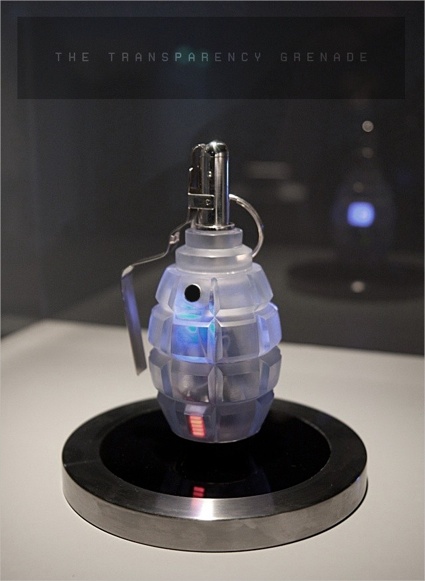
It might look like a Soviet F1 Hand Grenade, but what the Transparency Grenade contains is ‘just’ a tiny computer, a microphone and a powerful wireless antenna. No explosive then! Except maybe the information that the device is capable of blasting to the world. The Transparency Grenade fights against the lack of corporate and governmental transparency. It captures network traffic and audio at the site of closed meetings and anonymously streams the data to a dedicated server where email fragments, HTML pages, images and voice are extracted and displayed on an online map.
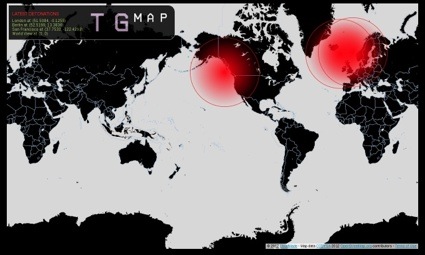 Browser-based map interface to Transparency Detonations
Browser-based map interface to Transparency Detonations
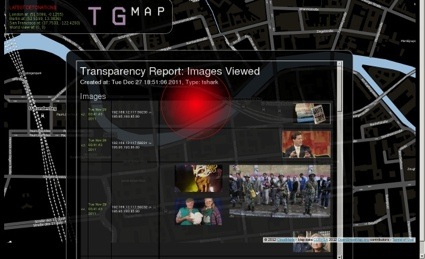 Browser-based map interface to Transparency Detonations
Browser-based map interface to Transparency Detonations
The device was created by Critical Engineer and artist Julian Oliver, author of works such as a modified analog colour television able to capture and screen images downloaded by people on local wireless hotspots, a wall plug that messes with the news read by other people on wireless hotspots and a software platform for replacing billboard advertisements with art in real-time. Now i’m left wondering why i didn’t try and interview him for the blog before…
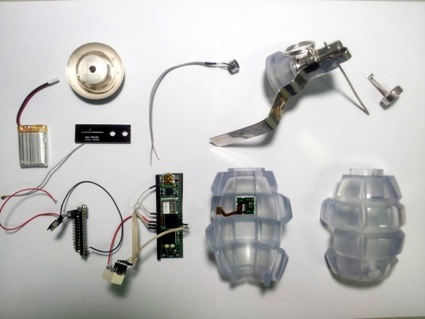 Hi Julian! What strikes me with your latest project is the way it looks. It is miles away from the ‘bastard in beige’ newstweek. Why did you decide to give the work such a threatening design?
Hi Julian! What strikes me with your latest project is the way it looks. It is miles away from the ‘bastard in beige’ newstweek. Why did you decide to give the work such a threatening design?
I gave the Transparency Grenade this design to signify some of the conversation around cyber warfare, ‘information weapons’ and the Cyber Soldier divisions marching out from national defense budgets worldwide. It can be considered a functional weapon in a symbolically representative container.
We’ve seen the transformative power of network-leveraged leaking in the last decade, first with the incumbent Cryptome and then much more recently with Wikileaks. The very idea of an immaterial explosion with the power to shake the walls of institutions, businesses and political cultures – moving matter and people in its wake – is naturally attractive, not only in the conceptual sense.
The volatility of information in networked, digital contexts itself frames a precedent for clamouring (and often unrealistic) attempts to contain it. One could even say it’s this desperate fear of the leak that produces images like my grenade, images that will continue to take violent forms in popular culture, journalism and Presidential speeches in time. In fact the metaphor of a Transparency Grenade is itself not new, first used publicly by Mike Taylor in the Observer, a few months after I drew up this project. A timely coincidence.
Most importantly however it is the hyperbole and fear around containing these volatile records, of the cyber burglary, that increasingly yields assumptive logics that ultimately shape how we use networks and think about the right to information. Just as record companies claim billions in losses due to file sharing, the fear of the leak is being actively exploited by law makers to afford organisations greater opacity and thus control.
This anxiety, this ‘network insecurity’, impacts not just upon the freedom of speech but the felt instinct to speak at all. All of a sudden letting public know what’s going on inside a publicly funded organisation is somehow ‘wrong’ –Bradley Manning a sacrificial lamb to that effect. Meanwhile civil servants and publicly-owned companies continue to make decisions behind guarded doors that impact the lives of many, whether human or other animal.
All we have left from the Bin Laden assassination, for instance, is that photo from The Situation Room, a bunch of contradictory reports of what actually happened and a body being eaten by sea lice somewhere in the Indian Ocean – or was it the Indian Ocean? How much did that assassination cost American tax payers? Of course we wonder what was said in that room! Somehow such a significant event has now been reduced to a little black box and scrapbook..
I believe quality journalism has never been so important as it is today yet at the same it’s never been so threatened, both in and out of a democratic context. Given great reductions to the freedom of the press recently it’s only natural that we see them adopt guerilla tactics – especially given new discovery vectors opened up by digital communications. It should come as no surprise many of their tactics will be technically illegal or even ethically corrupt!
As we saw with the News of the World scandal, they are competing within an economy where news has capital value, itself a deep and driving flaw. Under such conditions, and baited with possibility, news corporations will increasingly look for points of exploit with exit strategies (and/or apologies) prepared.
With the Transparency Grenade I wanted to capture these important tensions in an iconic, hand-held package.
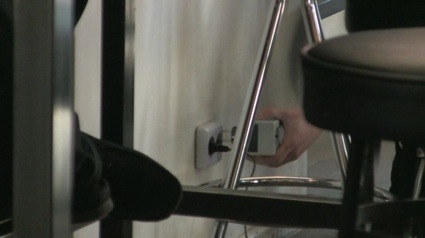 Julian Oliver and Danja Vasiliev, Newstweek, 2011
Julian Oliver and Danja Vasiliev, Newstweek, 2011
Has anyone tested it in some corporate or governmental place? Is this something you plan to do one day?
Even if I planned to I certainly wouldn’t mention it here!
It is perhaps worth mentioning however that from the software side I haven’t implemented anything new. Network packet capture has been around for decades, digital audio streaming for quite some time and TCP stream reconstruction also. Rather, I’ve wrapped up a variety of command line utilities in scripts that allow for the whole thing to work, both on the device and the server. An upcoming project ‘Covert Peripherals’ will explore this, as a canvas for productive paranoia. You’ll never trust your mouse again..
Because of the simplicity of the design it is relatively trivial for me to port the Transparency Grenade back-end to the Android platform, something I’m working on currently thanks to a generous hardware donation from Australian based developer Scott Robinson. This will allow activists (or those simply sick of the relative opacity of their organisation) to deploy Transparency Grenade like functionality on their rooted Android phone and send the data over an encrypted channel via their GSM provider to a publicly available map, displaying the detonation as data from that site.
I will not offer the public map interface and data mining parts as a service (that’d be illegal, wouldn’t it!). I will however provide code for people to install on their servers and or study.
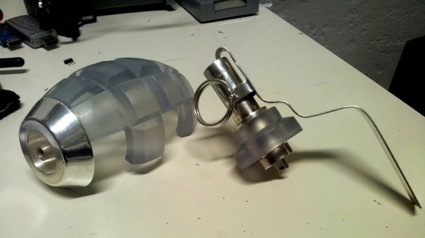 Who’d be your dream ‘target’? Who do you think has secrets worth unveiling?
Who’d be your dream ‘target’? Who do you think has secrets worth unveiling?
Governments aside I certainly think we need a great deal more transparency in the Agricultural sector. A lot of effort is being exerted, including laws written, to ensure we don’t know where our food comes from, alongside the impact of that food on the environment and our bodies. A year ago Senator Jim Norman of Florida proposed a blanket ban on video or photography of farms, even from the road! We have to wonder why. The meat industry is especially aggressive in this regard, their lobbies very powerful.
The arms industry, the rampant privatisation of publicly owned infrastructure, pharmaceutical industries, are also increasingly opaque in their business dealings. Why are cures, for instance, such highly guarded secrets? Symptom relief is often vastly more profitable.
What has been the reaction to the Transparency Grenade so far? Newstweek garnered much media attention and i suspect the TG, because of its functions but again also because of the way it looks, might distress and worry some people.
I’ve heard words like ‘gorgeous’ often enough for fearful responses to not dominate, thankfully! We had around 2000 people to the exhibition opening of our show
I wanted it to look elegant, a bottle of high-class perfume, as much as a weapon. Thanks to Berlin-based Susanne Stauch, who modeled the metal components in high-grade sterling silver, that aesthetic carries across I think, at least when you see it in the flesh.
I’d like to add that my conversations with writer and journalist Marta Peirano greatly nourished my thinking around this project, this interview alongside.
Thank you Julian!
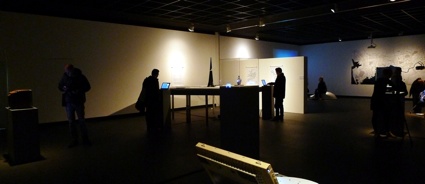 View of Weise7: the incompatible laboratorium
View of Weise7: the incompatible laboratorium
The Transparency Grenade was created for the Weise7 Studio exhibition, curated by Transmediale 2012 Director, Kristoffer Gansing.. You can visit it at Labor Berlin, Haus Der Kulturen der Welt, until Feb 20, 2012.
